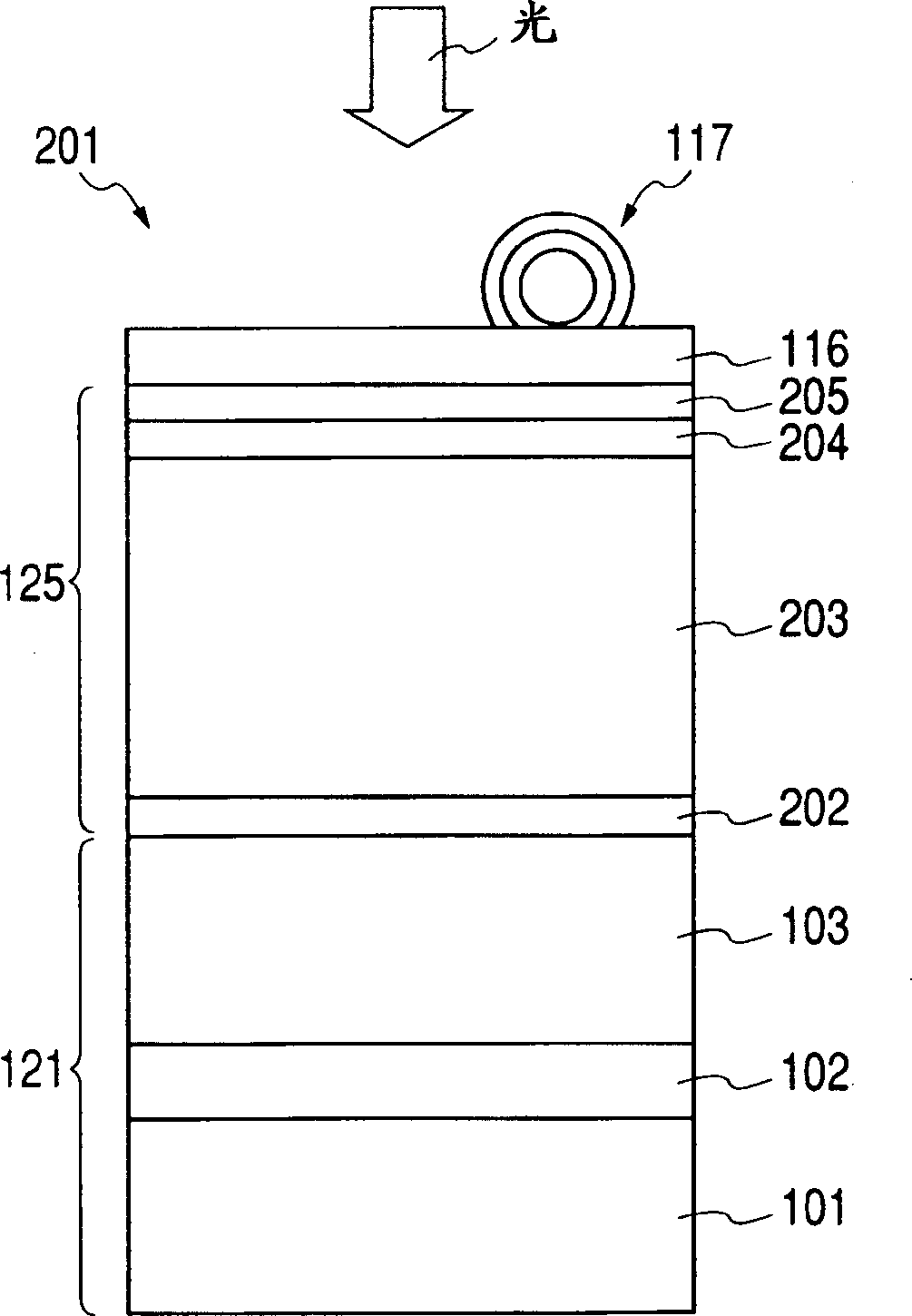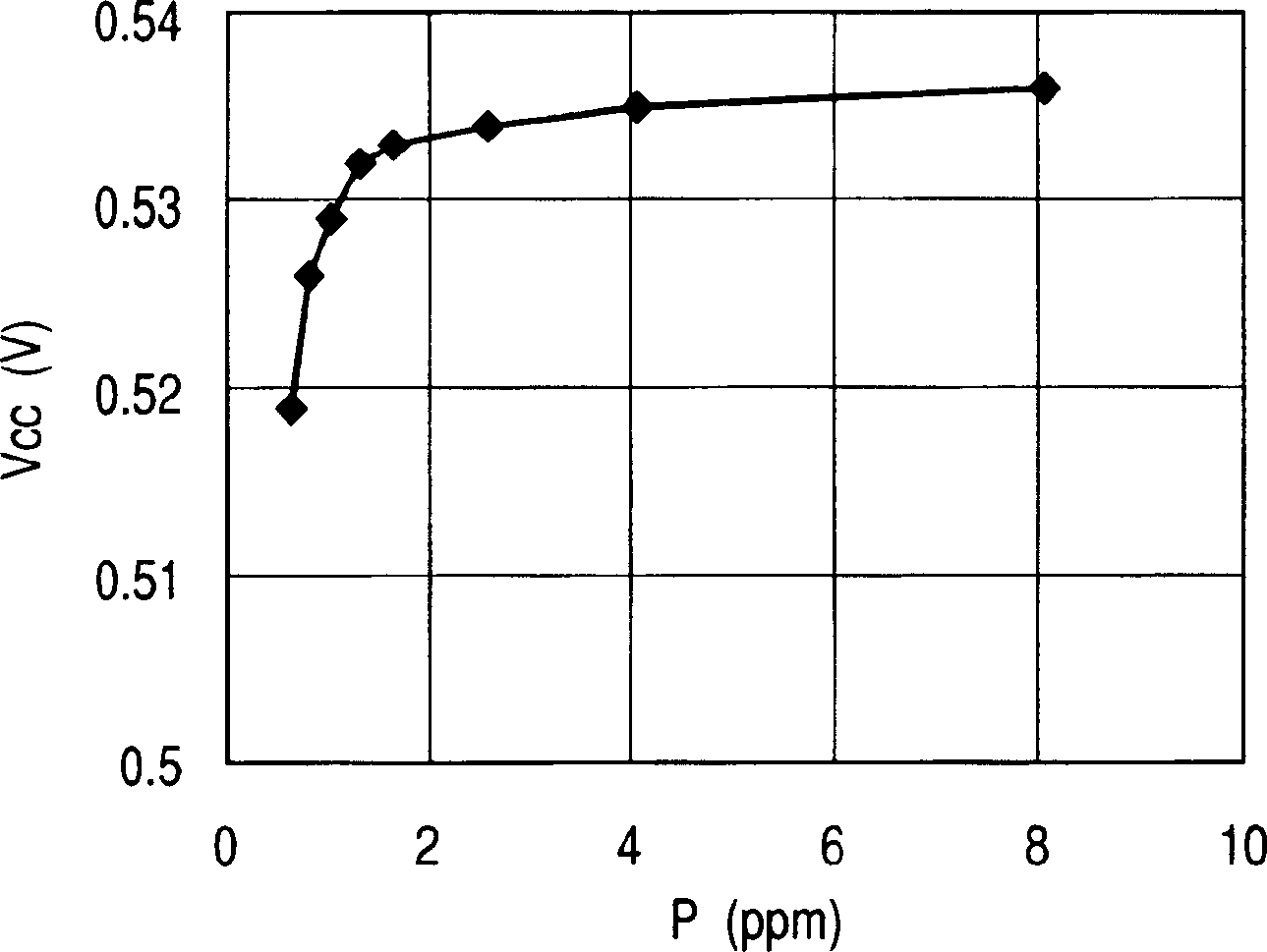Stacked photovoltaic element and current balance adjustment method
A photoelectric element and current balance technology, applied in the field of solar cells, can solve the problems of not being able to obtain a large open circuit voltage, current balance deviation, and difficult to manage film thickness
- Summary
- Abstract
- Description
- Claims
- Application Information
AI Technical Summary
Problems solved by technology
Method used
Image
Examples
Embodiment 1
[0074] This example is made figure 1 Examples of optoelectronic components. First, use Figure 9 , Figure 10 The setup shown produces substrates for photovoltaic elements of the present invention.
[0075] Figure 9 The device 301 is a roll-to-roll film forming device capable of simultaneously and continuously forming different films in different spaces on a belt-shaped support 302 . 303, 304, and 305 are vacuum chambers for forming thin films by DC sputtering, and the formed thin films can be changed by changing the target material. Using a Ti target in the vacuum chamber 303, an Ag target in 304, and a ZnO target in 305, a Ti layer, an Ag layer, and a ZnO layer can be sequentially formed on the support.
[0076] Inside each vacuum chamber, there is a heater 310 for heating the strip-shaped support 302 from the back surface, and the strip-shaped support 302 is sandwiched, and a target 311 and an electrode 312 connected to the target are provided on the opposite side. A...
Embodiment 2
[0107] The same photovoltaic element as in Example 1 was formed except that a 2.8 μm ZnO layer by sputtering was used as a substrate instead of forming a ZnO layer by an electrolytic method as the lower transparent conductive layer 104 . As a result, it was found that, similarly to Example 1, good characteristics and yield were obtained.
Embodiment 3
[0109] In addition to flowing through the pH of 0.01 sccm in the vacuum chamber 503 during the formation of the i-layer of the bottom unit of Example 1 3 Except for the gas, the same photovoltaic element as in Example 1 was fabricated. As a result, it was found that, similarly to Example 1, good characteristics and yield were obtained.
[0110] In this way, according to the multilayer photoelectric element and the current balance adjustment method of the embodiment of the present invention, it is possible to manufacture a photoelectric element with high conversion efficiency at a high yield.
PUM
 Login to View More
Login to View More Abstract
Description
Claims
Application Information
 Login to View More
Login to View More - R&D
- Intellectual Property
- Life Sciences
- Materials
- Tech Scout
- Unparalleled Data Quality
- Higher Quality Content
- 60% Fewer Hallucinations
Browse by: Latest US Patents, China's latest patents, Technical Efficacy Thesaurus, Application Domain, Technology Topic, Popular Technical Reports.
© 2025 PatSnap. All rights reserved.Legal|Privacy policy|Modern Slavery Act Transparency Statement|Sitemap|About US| Contact US: help@patsnap.com



